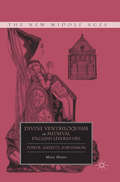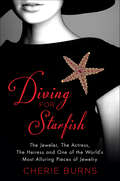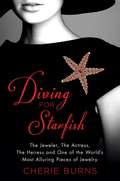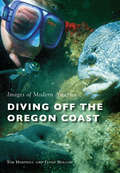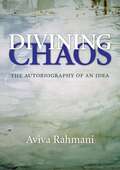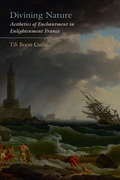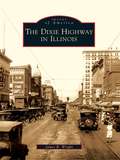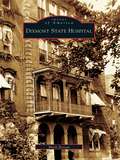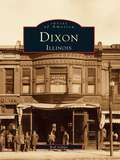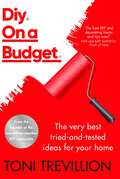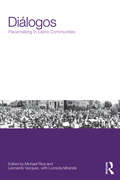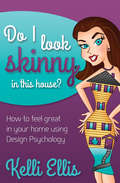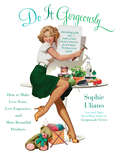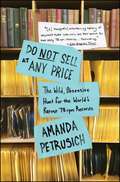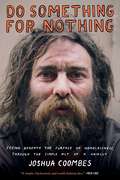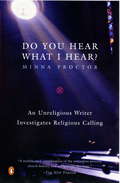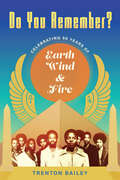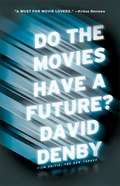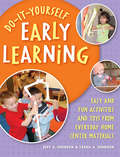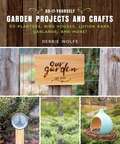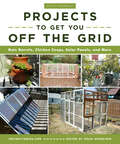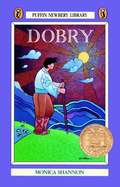- Table View
- List View
Divine Ventriloquism in Medieval English Literature
by Mary HayesA study of medieval attitudes towards the ventriloquism of God's and Christ's voices through human media, which reveals a progression from an orthodox view of divine vocal power to an anxiety over the authority of the priest's voice to a subversive take on the divine voice that foreshadows Protestant devotion.
Diving for Starfish: The Jeweler, The Actress, The Heiress and One of the World's Most Alluring Pieces of Jewelry
by Cherie BurnsBoth a history of fine jewelry coming out of Paris in the Golden Age and a tour through the secretive world of high-end, privately-sold jewelry, Diving for Starfish is a stylish detective story with a glittering piece of jewelry at its heart. In the mid 1930s, in the workroom of the famous Parisian jeweler Boivin, a young jewelry designer named Juliette Moutard created one of the most coveted pieces of jewelry in the world—the famous starfish pin—still sought after today by aficionados of fine jewelry. The starfish, created out of gold and encrusted with 71 cabochon rubies and 241 small amethysts, was distinctive because its five rays were articulated, meaning that they could curl and conform to the bustline or shoulder of the women who wore it. The House of Boivin made three of them. Two of the women who bought and wore the starfish were Claudette Colbert and Millicent Rogers. Obsessed with the pin after she saw it in the private showroom of a Manhattan jewelry merchant, Cherie Burns set off on a journey to find out all she could about the elusive pins and the women who owned them. Her search took her around the world to Paris, London, New York, and Hollywood. Diving for Starfish is the story of these marvelous pieces of jewelry and the equally dazzling women who loved them.
Diving for Starfish: The Jeweler, the Actress, the Heiress, and One of the World's Most Alluring Pieces of Jewelry
by Cherie BurnsIn the mid 1930s, in the workroom of the famous Parisian jeweler Boivin, a young jewelry designer named Juliette Moutard created one of the most coveted pieces of jewelry in the world—the famous starfish pin—still sought after today by aficionados of fine jewelry. The starfish, created out of gold and encrusted with 71 cabochon rubies and 241 small amethysts, was distinctive because its five rays were articulated, meaning that they could curl and conform to the bustline or shoulder of the women who wore it. The House of Boivin made three of them. Two of the women who bought and wore the starfish were Claudette Colbert and Millicent Rogers. Obsessed with the pin after she saw it in the private showroom of a Manhattan jewelry merchant, Cherie Burns set off on a journey to find out all she could about the elusive pins and the women who owned them. Her search took her around the world to Paris, London, New York, and Hollywood. Diving for Starfish is the story of these marvelous pieces of jewelry and the equally dazzling women who loved them.
Diving off the Oregon Coast (Images of Modern America)
by Tom Hemphill Floyd HolcomThe Oregon Coast is well known for its beauty. The rugged coastline with its constant wave and surf action provides the calming sounds of the ocean that all can hear, but a diver also sees the giant kelp forests and gets excited about the promise of abundant marine life, brilliantly colored anemone, sponges, cute little reef fish and huge ling cod, large plate-sized rock scallops, abalone, giant Pacific octopus, and friendly wolf eel. This is truly a diver's paradise. There are no stories of skin divers prior to World War II, but with the development of rubber dry suits and neoprene wetsuits in the early 1950s, divers began to explore the reefs out past the surf and in protected coves near the shoreline. Images of Modern America: Diving off the Oregon Coast showcases the images of a few diving pioneers, early and current dive stores, the beautiful coastline, and the colorful world underwater.
Divining Chaos: The Autobiography of an Idea
by Aviva RahmaniA spirited memoir by artist Aviva Rahmani, offering a relatable narrative to discuss trigger point theory and the importance of eco-art activism.Divining Chaos is an intimate personal memoir of unparalleled transparency into the moments in Rahmani's life that shaped her as an artist and activist. Detailing the history that led her to two seminal projects—Ghost Nets, restoring a coastal town dump to flourishing wetlands, and The Blued Trees Symphony, which applied her premises to challenge natural gas pipelines with a novel legal theory about land use—Rahmani shares the decisions that shaped her life’s work and thinking. Her discussions about trigger point theory argue for how to predict, confront, and determine outcomes to the ecological challenges we face today.
Divining Nature: Aesthetics of Enchantment in Enlightenment France
by Tili Boon CuilléThe Enlightenment remains widely associated with the rise of scientific progress and the loss of religious faith, a dual tendency that is thought to have contributed to the disenchantment of the world. In her wide-ranging and richly illustrated book, Tili Boon Cuillé questions the accuracy of this narrative by investigating the fate of the marvelous in the age of reason. Exploring the affinities between the natural sciences and the fine arts, Cuillé examines the representation of natural phenomena—whether harmonious or discordant—in natural history, painting, opera, and the novel from Buffon and Rameau to Ossian and Staël. She demonstrates that philosophical, artistic, and emotional responses to the "spectacle of nature" in eighteenth-century France included wonder, enthusiasm, melancholy, and the "sentiment of divinity." These "passions of the soul," traditionally associated with religion and considered antithetical to enlightenment, were linked to the faculties of reason, imagination, and memory that structured Diderot's Encyclopédie and to contemporary theorizations of the sublime. As Cuillé reveals, the marvelous was not eradicated but instead preserved through the establishment and reform of major French cultural institutions dedicated to science, art, religion, and folklore that were designed to inform, enchant, and persuade. This book has been made possible in part by the National Endowment for the Humanities: Exploring the human endeavor.
Dixie Highway in Illinois, The
by James R. WrightThe Dixie Highway, once a main thoroughfare from Chicago to Miami, was part of an improved network of roads traversing the landscape of 10 states. A product of the Good Roads Movement of the early 20th century, construction on the highway in Illinois took place from 1916 to 1921. When completed in 1921, the Dixie Highway was the longest continuous paved road in the state. It ran through parts of Cook, Will, Kankakee, Iroquois, and Vermilion Counties, with service stations, roadside diners, and campgrounds sprouting up along the way. With over 200 vintage photographs, The Dixie Highway in Illinois takes readers on a tour from the Art Institute of Chicago, in the heart of the city on Michigan Avenue, to the Illinois state line east of Danville, exploring this historic highway and the communities it passes through.
Dixmont State Hospital
by Mark BentonPittsburgh natives have recognized Dixmont State Hospital by its towering boiler house smokestack that stood prominently along busy Route 65. It has been a topic of curiosity, urban exploration, ghost hunts, and historical research; but prior to its closing in 1984, Dixmont State Hospital stood as a refuge to the mentally ill for three counties in western Pennsylvania. A majestic study in the Kirkbride design of asylum architecture, Dixmont was originally built by the Western Pennsylvania Hospital in 1859 as a private venture before being bought by the commonwealth. It was named for famed mental health care reformer Dorothea Dix, who was instrumental in choosing the hospital's site--a site chosen for its tranquility and its view of the Ohio River. Dixmont was completely razed in January 2006 to make way for a multi-parcel commercial endeavor. But for those who spent time there, Dixmont was a vibrant community within a community. Through historic photographs, Dixmont State Hospital opens up this world that was off limits to the general public but was alive with festivals, celebrations, and the successful treatment of patients.
Dixon, Illinois (Images of America)
by Bob GiblerThis fascinating new addition to the Images ofAmerica series offers a glimpse into the uniquehistory of Dixon, Illinois, with the use of over 200 historic photographs. In the spring of 1830, John Dixon settled with his family near the Rock River in Northern Illinois. Dixon, Illinois, soon grew as men crossed the river here on their way to work in the mines at Galena. In 1832, the Black Hawk War brought a number of now-famous men to this remote outpost of civilization. Winfield Scott, Zachary Taylor, Robert Anderson, Abraham Lincoln, and Jefferson Davis were all here, each of them equally unconscious of future immortal honors. The act of the Illinois General Assembly creating Lee County was approved February 27, 1839, with Dixon officially becoming the county seat on May 31, 1839. Dixon was on its way to fast becoming a central point in Illinois, well known for its industry, beautiful scenery, and the enchantment of the Rock River Valley.
Diy. On a Budget.: From the founder of the best-loved two-million-member DIY community
by Toni Trevillion'We love Diy. On a Budget. - it has the best DIY and decorating hacks and tips ever! ' Kate and Kay Allinson, Pinch of Nom Transform your home without breaking the bank - everything you need to know before starting your own DIY project. Dreaming of panelling but don't know where to start? Looking for ways to refresh your tired kitchen? Brimming with ideas but have a limited budget? The official Diy. On a Budget. handbook from the founder of the 2 million strong online community will give you all the tools, tips and inspiration you need to re-decorate rooms and homes of all sizes, no matter how big or small your budget. Your essential DIY handbook includes: - Before You Start: Toni's tips on what you need to know before you start painting, tiling, laying floors or upcycling furniture, including the essential kit to own. - Room by Room: the best ideas to decorate your Kitchen, Living Room, Bathroom, Bedroom, Utilities and Storage, Hall and Landing, even Nooks and Crannies. - Keep to Budget: A must-have budget planner to keep your transformation on track. - Help is on Hand: When things go wrong! Top tips from Toni on fixing mistakes, drawing in useful advice from the community. Make your home renovation picture perfect and wallet-friendly with Diy. On a Budget. 'Diy. On a Budget. is crammed full of decor hacks, tips and tricks to make small tweaks or big changes to your home.' The Observer
Diálogos: Placemaking in Latino Communities
by Michael Rios Leonardo Vazquez Lucrezia MirandaLatinos are one of the largest and fastest growing social groups in the United States, and their increased presence is profoundly shaping the character of urban, suburban, and rural places. This is a response to these developments and is the first book written for readers seeking to learn about, engage and plan with Latino communities. It considers how placemaking in marginalized communities sheds light on, and can inform, community-building practices of professionals and place dwellers alike. Diálogos: Placemaking in Latino Communities will help readers better understand the conflicts and challenges inherent in placemaking, and to make effective and sustainable choices for practice in an increasingly multi-ethnic world. The essays explore three aspects of place: the appropriation and territorialization of the built environment, the claiming of rights through collective action, and a sense of belonging through civic participation. The authors illustrate their ideas through case studies and explain the implications of their work for placemaking practice. A consistent theme about planning and design practice in Latino communities emerges throughout the book: placemaking happens with or without professional planners and designers. All of the essays in Diálogos demonstrate the need to not only imagine, build, and make places with local communities, but also to re-imagine how we practice democracy inclusive of cross-cultural exchange, understanding, and respect. This will require educators, students, and working professionals to incorporate the knowledge and skills of cultural competency into their everyday practices.
Do I Look Skinny in This House?: How to Feel Great in Your Home Using Design Psychology
by Kelli EllisThe award-winning interior designer teaches you how to make your home truly your own—from function and flow to color and mood—in this unique guide.Our homes are so much more than just walls, windows, and floors. They exemplify who we are. We wear our homes like we wear haute couture—and put them on display for all to see. In Do I Look Skinny in This House?, celebrity interior designer Kelli Ellis shows you how to use the principles of design psychology to turn your home into your ideal haven—an extension of yourself. To design your home in a meaningful way, you need to start with the “why” rather than the “how.” Knowing why you adore certain colors, styles, and decor is so much more important than knowing where to place furniture in a room. Understanding the principles that create ambiance, feeling, and mood in your home are key to creating your ideal haven.With the inspiration and framework Kelli provides, you’ll be able to reimagine your home with all the joy, fulfillment, and contentment you seek.
Do It Gorgeously: How to Make Less Toxic, Less Expensive, and More Beautiful Products
by Sophie UlianoIt's official: In these tough times, clueless is out--and crafty is in. For both financial and environmental reasons, life is all about doing well with what you have. But that doesn't mean you can't still be fabulous. Do It Gorgeously shows you how to make nearly everything you would otherwise purchase: From the kitchen to the nursery, from your medicine cabinet to your makeup drawer, you'll be astounded by how easy and inexpensive it is to make safe and eco-friendly products for your family. You deserve to have it all--and now you can do it yourself!Praise for Sophie Uliano:"To be with Sophie is to be so caught up in the thrill of the potential of good!" --Julia Roberts"Sophie Uliano teaches us that we need not equate eco-friendly with Birkenstocks and wheatgrass shakes . . . she ushers us into a lifestyle that's ever so eco-chic." --Los Angeles Confidential"Sophie Uliano is a Mary Poppins for the new millennium: Rather than advocating a spoonful of sugar to help the medicine go down, Uliano will recommend rubbing sugar on your skin to make it glow--and then offer numerous other homegrown tips and tricks." --Good Housekeeping
Do Not Erase: Mathematicians and Their Chalkboards
by Jessica WynneA photographic exploration of mathematicians’ chalkboards“A mathematician, like a painter or poet, is a maker of patterns,” wrote the British mathematician G. H. Hardy. In Do Not Erase, photographer Jessica Wynne presents remarkable examples of this idea through images of mathematicians’ chalkboards. While other fields have replaced chalkboards with whiteboards and digital presentations, mathematicians remain loyal to chalk for puzzling out their ideas and communicating their research. Wynne offers more than one hundred stunning photographs of these chalkboards, gathered from a diverse group of mathematicians around the world. The photographs are accompanied by essays from each mathematician, reflecting on their work and processes. Together, pictures and words provide an illuminating meditation on the unique relationships among mathematics, art, and creativity.The mathematicians featured in this collection comprise exciting new voices alongside established figures, including Sun-Yung Alice Chang, Alain Connes, Misha Gromov, Andre Neves, Kasso Okoudjou, Peter Shor, Christina Sormani, Terence Tao, Claire Voisin, and many others. The companion essays give insights into how the chalkboard serves as a special medium for mathematical expression. The volume also includes an introduction by the author, an afterword by New Yorker writer Alec Wilkinson, and biographical information for each contributor.Do Not Erase is a testament to the myriad ways that mathematicians use their chalkboards to reveal the conceptual and visual beauty of their discipline—shapes, figures, formulas, and conjectures created through imagination, argument, and speculation.
Do Not Sell At Any Price
by Amanda PetrusichThe untold story of a quirky and important subculture: The world of 78rpm records and the insular community that celebrates them--by acclaimed music critic and author Amanda Petrusich, who contributes regularly to Pitchfork, The Oxford American, and The New York Times.Before MP3s, CDs, and cassette tapes, even before LPs or 45s, the world listened to music on 78rpm records--those fragile, 10-inch shellac discs. While vinyl records have enjoyed a renaissance in recent years, good 78s are exponentially harder to come by and play. A recent eBay auction for the only known copy of a particular record topped out at $37,100. Do Not Sell at Any Price explores the rarified world of the 78rpm record--from the format's heyday to its near extinction--and how collectors and archivists are working frantically to preserve the music before it's lost forever. Through fascinating historical research and beguiling visits with the most prominent 78 preservers, Amanda Petrusich offers both a singular glimpse of the world of 78 collecting and the lost backwoods blues artists whose 78s from the 1920s and 1930s have yet to be found or heard by modern ears. We follow the author's descent into the oddball fraternity of collectors--including adventures with Joe Bussard, Chris King, John Tefteller, Pete Whelan, and more--who create and follow their own rules, vocabulary, and economics and explore the elemental genres of blues, folk, jazz, and gospel that gave seed to the rock, pop, country, and hip-hop we hear today. From Thomas Edison to Jack White, Do Not Sell at Any Price is an untold, intriguing story of preservation, loss, obsession, art, and the evolution of the recording formats that have changed the ways we listen to (and create) music.
Do Something for Nothing: Seeing Beneath The Surface Of Homelessness, Through The Simple Act Of A Haircut
by Joshua CoombesThrough the simple act of a haircut, readers are taken on a geographical and emotional journey into the lives of humans experiencing homelessness in different cities across the world. "In this uplifting book, Coombes deftly illustrates how reaching out and listening can break down barriers in an often indifferent world." --Booklist "Coombes documents the transformation that comes over people when they are given a fresh look, a new perspective, some hope. The photos are inspirational as is every page of this uplifting book. Their smiles show relief as well as happiness. Sure, a haircut alone won’t solve all their problems, but it is a humanizing start. I’m so glad I read this book and urge you to do so as well." --Seattle Book Review, 5 out of 5 stars "Such a simple gesture boosts someone's mood, what they think of themselves--and what society thinks of them. And while the haircuts are of value, it is Coombes' interest, caring and friendship that are of greater value." --A Bookworm's World "Coombes is a hairdresser, and he believes that small acts of love can make a big impact." --Morgan Freeman, in The Story of Us "Joshua’s stories show the power that empathy and compassion have to turn a common, everyday act into something transformative. They are the revelations of connection." --Michael Sheen, actor and activist "A simple, big-hearted, and world-shaking idea." --Nick Cave, singer, songwriter "The most vulnerable among us deserve our empathy, compassion, and advocacy. In leading by example, Joshua Coombes is both thought-provoking and inspiring, making us each ask what more we might do to better see and care for our communities. Joshua's work has always struck a chord with me, and I’m certain this book will strike a chord in the hearts of readers everywhere." --Sophia Bush, actor and activist "Joshua Coombes takes a simple concept--giving free haircuts to homeless people--and turns it into an spiritual parable. Armed with clippers, scissors, dry shampoo, and unpretentious decency, Coombes introduces the reader to those he met living on the streets of America, Australia, India, France, Holland, and his native UK, and in a warm and witty voice transforms his characters from invisible to unforgettable just as he did with the haircuts." --Danny Goldberg, author of Serving the Servant: Remembering Kurt Cobain "Cutting someone's hair is a deeply intimate act, and when done for free, it conveys a profound affirmation of personal value. Do Something for Nothing reclaims the revolutionary power of small acts of human compassion across the boundaries that too often divide us.” --Mark Andersen, coauthor of We Are the Clash: Reagan, Thatcher, and the Last Stand of a Band That Mattered "Joshua Coombes's work gives us what we so desperately need right now: hope, optimism, kind curiosity, and real human connection. This book will make you want to do something, just because you can." --Emma Gannon, author of The Multi-Hyphen Life When you're on the fringes of society, being noticed can mean everything. In 2015, while working at a London hair salon, Joshua Coombes took to the streets with his scissors to build relationships with people sleeping rough in the capital. This inspired him to begin posting transformative images on social media to amplify their voices. These stories resonated and thousands of people got involved in their own way. #DoSomethingForNothing was born--a movement that encourages people to connect their skills and time to those who need it. Via the simple act of a haircut, readers are taken on a geographical and emotional journey into the lives of humans experiencing homelessness in different cities across the world. Featuring never-before-seen photographs and all-new writing, Do Something for Nothing explores themes of lov
Do You Hear What I Hear?: An Unreligious Writer Investigates Religious Calling
by Minna ProctorHow does a young, secular intellectual understand her sixtyish university-professor father's sudden calling to become an Episcopal priest? This is the question that inspired Minna Proctor's candid, intelligent, and provocative examination. When her father is summarily rejected, Proctor sets out to find out why the Church makes it so insanely (and appropriately) difficult to join the priesthood and to uncover the historical and doctrinal foundations of its "discernment" process. Confronting the cultural forces that shaped her unreligious early life, her parents' divorce, and her father's spiritual awakening, Do You Hear What I Hear? is at once an intellectual quest based on interviews with clergy and religious scholars and readings of classic faith narratives, a wry document of filial love and incomprehension, and a layperson's fascinating perspective on spiritual calling.
Do You Hear What I Hear?: An Unreligious Writer Investigates Religious Calling
by Minna ProctorAt the first revelation that her father, a sixtyish university professor, wants to become an Episcopal priest, Minna Proctor is flummoxed. She neither encourages nor disparages him because she simply doesn’t know what it means. Brought up primarily by her mother in a household without any religious expression or guidance, Proctor was surprised to learn that her unconventionally charming, intellectual father had a religious life, and what’s more, a higher calling. When he is summarily turned away, Proctor delves into the byzantine discernment process that rejected her father from the priesthood and the pivotal notion of calling.
Do You Remember?: Celebrating Fifty Years of Earth, Wind & Fire (American Made Music Series)
by Trenton BaileyIn Do You Remember? Celebrating Fifty Years of Earth, Wind & Fire, Trenton Bailey traces the humble beginning of Maurice White, his development as a musician, and his formation of Earth, Wind & Fire, a band that became a global phenomenon during the 1970s. By the early 1980s, the music industry was changing, and White had grown weary after working constantly for more than a decade. He decided to put the band on hiatus for more than three years. The band made a comeback in 1987, but White’s health crisis soon forced them to tour without him. During the twenty-first century, the band has received numerous accolades and lifetime achievement and hall of fame awards. The band remains relevant today, collaborating with younger artists and maintaining their classic sound. Earth, Wind & Fire stood apart from other soul bands with their philosophical lyrics and extravagant visual art, much of which is studied in the book, including album covers, concerts, and music videos. The lyrics of hit songs are examined alongside an analysis of the band’s chart success. Earth, Wind & Fire has produced twenty-one studio albums and several compilation albums. Each album is analyzed for content and quality. Earth, Wind & Fire is also known for using ancient Egyptian symbols, and Bailey thoroughly details those symbols and Maurice White’s fascination with Egyptology. After enduring many personnel changes, Earth, Wind & Fire continues to perform around the world and captivate diverse audiences.
Do the Movies Have a Future?
by David DenbyIn the second decade of the twenty-first century, the movies, once America's primary popular art form, have become an endangered species. Do the Movies Have a Future? is a rousing and witty call to arms. In these sharp and engaging essays and reviews, New Yorker movie critic David Denby weighs in on "conglomerate aesthetics," as embodied in the frenzied, weightless action spectacles that dominate the world's attention, and "platform agnosticism," the notion that movies can be watched on smaller and smaller screens: laptops, tablets, even phones. At the same time, Denby reaffirms that movies are our national theater, and in this exhilarating book he celebrates such central big movies as Avatar and The Social Network as well as small but resonant triumphs like There Will Be Blood and The Tree of Life. Denby joyously celebrates what remains of the shared culture in romantic comedy, high school movies, and chick flicks; he assesses the expressive triumphs and failures of auteurs Quentin Tarantino, the Coen brothers, Pedro Almodóvar, and David Fincher. Refusing nostalgia, he mines the past for strength, examining the changing nature of stardom and the careers of Joan Crawford, Otto Preminger, and Victor Fleming, and the continuing self-invention of Clint Eastwood. And he recreates the excitement of reading two critics who embodied the film culture of their times, James Agee and Pauline Kael. Wry, passionate, and incisive, Do the Movies Have a Future? is both a feast of good writing and a challenge to fight back. It is an essential guide for movie lovers looking for ammunition and hope.
Do-It-Yourself Early Learning
by Jeff A. Johnson Tasha A. JohnsonMaking learning a hands-on experience, Do-It-Yourself Early Learning shows home child care providers how to find and use many of the inexpensive--and often overlooked--building, home-repair, and construction materials available at local hardware stores and home centers to create fun activities and toys that promote play, exploration, and discovery.This innovative guide takes teachers on a journey through the aisles of the local home center to help them find creative ways to teach young children to build, interact, and learn from a wide variety of materials--from plumbing and electrical supplies to paints and hardware items.
Do-It-Yourself Garden Projects and Crafts: 60 Planters, Bird Houses, Lotion Bars, Garlands, and More
by Debbie WolfeImprove Your Garden and Home with Easy DIY Projects and Beautiful Botanical Crafts Create your dream garden with simple bird baths, herb drying racks, and unique planters. And bring the outdoors indoors with natural fabric dyes, pressed flower paper, and herbal bouquets. <P><P>DIY Garden Projects and Crafts book relies on home grown and foraged materials that will inspire creativity and capture the bounty of the seasons. The sixty practical and decorative projects for use in the garden and home include: <br>Gardener's Tool Apron <br>Metal garden charms <br>Veggie Market Tote <br>Macrame produce bag <br>Gourd bird feeder <br>Kirigami leather hanging planter <br>Tomato cage plant stand <br>Shibori Dyed Fabric <br>Herbal lotion bars <br>Gardener hand scrub <br>All-purpose thyme cleaner <br>And more! <P><P>Do-It-Yourself Garden Projects and Crafts features detailed, step-by-step instructions as well as simple crafting and gardening tips that will make your projects successful.
Do-It-Yourself Projects to Get You Off the Grid: Rain Barrels, Chicken Coops, Solar Panels, and More
by Noah WeinsteinInstructables is back with this inspiring book focused on a series of projects designed to get you thinking creatively about going green. Twenty Instructables illustrate just how simple it can be to make your own backyard chicken coop, or turn a wine barrel into a rainwater collector. Here, you will learn to: • Clip a chicken’s wings • Power your lawn mower with solar power • Create a chicken tractor for the city • Water your garden with solar power • Build a thermoelectric lamp • Create an algae bioreactor from water bottles • And much more! Illustrated with dozens of full-color photographs per project accompanying easy-to-follow instructions, this Instructables collection utilizes the best that the online community has to offer, turning a far-reaching group of people into a mammoth database churning out ideas to make life better, easier, and, in this case, greener, as this volume exemplifies.
Dobry
by Monica ShannonThere is always something to look forward to in Dobry's small Bulgarian village. From the delicious peppers and tomatoes he helps his mother and grandfather grow, to the visiting Gypsy Bear, to the Snow-Melting games that are the highlight of winter, Dobry lives within the circle of the year--and uses it in the art he shares with his friend Neda.<P><P> A Newberry Medal winner.
Doctor Faustus: With The English Faust Book
by Christopher Marlowe David WoottonThis edition of Doctor Faustus features annotated versions, with modernized spelling and punctuation, of the 1604 A-text and the 1592 text of Marlowe's source, the English Faust Book--a translation of the best-selling Historia von Johann Fausten published in Frankfurt in 1587, which recounts the strange story of Doctor John Faustus and his pact with the spirit Mephistopheles.David Wootton's Introduction charts Marlowe's brief, meteoric career; the delicate social and political climate in which Doctor Faustus was staged and the vexed question of the religious sensibilities to which it may have catered; the interpretive significance of variations between the A and B texts; and the shrewd and subversive uses to which Marlowe put the English Faust Book in crafting, according to Wootton, a drama in which orthodox Christian teaching triumphed, but in which Faustus has all the best lines.
